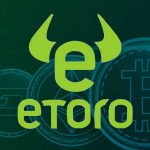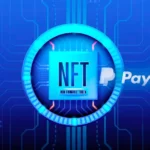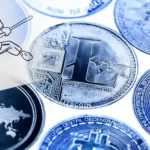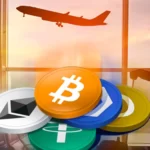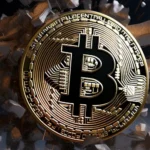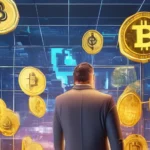In recent years, the worlds of artwork and cryptocurrency investment have collided in a phenomenon known as non-fungible tokens (NFTs). NFTs have revolutionized the artwork market with the aid of presenting visual artists with a brand new way to monetize their creations and presenting buyers with particular possibilities to own and change virtual belongings. This article explores the intersection of artwork and crypto investment, delving into the upward thrust of NFTs, their impact on the artwork world, and the broader implications for the destiny of digital possession and investment. So, if you are a newbie in the world of investing, immediate-alpha.com can help you by connecting you to one of many investment education firms out there so that you can learn more about investing.
Understanding Non-Fungible Tokens (NFTs)
Non-fungible tokens (NFTs) are unique digital belongings that constitute possession or proof of authenticity of a selected object or piece of content material on a blockchain. Unlike cryptocurrencies like Bitcoin or Ethereum, which are fungible and interchangeable, NFTs are indivisible and distinguishable, making every token particular and irreplaceable.
NFTs are usually created and traded on blockchain structures like Ethereum through the use of smart contracts, which encode the ownership and metadata of the virtual asset. This enables artists, creators, and collectors to shop for, promote, and transfer ownership of NFTs in an obvious and decentralized way, without the need for intermediaries or centralized authorities.
The Rise of NFTs in the Art World
NFTs have received full-size attention and adoption inside the art world, providing virtual artists with a new medium for showcasing and monetizing their work. Digital art, as soon as it is taken into consideration as niche or undervalued, has experienced a renaissance with the appearance of NFTs, attracting mainstream hobbyists and funding from collectors, celebrities, and establishments.
One of the most high-quality examples of NFT artwork is the sale of “Everyday: The First 5000 Days” with the aid of virtual artist Beeple for $69.3 million at Christie’s auction residence in March 2021. This historic sale catapulted NFT artwork into the spotlight, demonstrating the ability of digital artists to acquire a reputation and economic fulfillment in the burgeoning NFT market.
NFT artwork features a wide variety of virtual creations, consisting of virtual artwork, illustrations, animations, digital truth reports, and generative artwork. NFT systems like OpenSea, Rarible, and Foundation serve as marketplaces for buying, selling, and minting NFTs, enabling artists to attain a global target market and monetize their digital belongings at once.
Beyond Art: Exploring NFTs in Other Industries
While NFTs have gained huge traction in the art world, their applications make far-future virtual artwork, encompassing numerous industries and use cases. Some extremely good examples of NFTs in different industries consist of:
Gaming and Virtual Real Estate: NFTs are increasingly being used within the gaming industry to tokenize in-sport assets, characters, and virtual real estate. Players should purchase, promote, and trade NFTs representing rare objects or land parcels inside virtual worlds, creating new possibilities for digital possession and price advent.
Music and Entertainment: NFTs are disrupting the music and entertainment industries by enabling artists to tokenize song rights, live performance tickets, and one-of-a-kind content. Musicians, filmmakers, and content creators can leverage NFTs to interact with fans, monetize their creations, and establish direct relationships with audiences.
Collectibles and Memorabilia: NFTs are transforming the collectibles market with the aid of digitizing bodily belongings, which include buying and selling cards, comic books, and memorabilia. Collectors should purchase NFTs representing uncommon or restrained-version items, enhancing the liquidity, authenticity, and accessibility of collectible property.
Intellectual Property and Licensing: NFTs offer new opportunities for managing and monetizing intellectual asset rights, copyrights, and licensing agreements. Content creators, brands, and copyright holders can tokenize virtual property and enforce ownership rights via smart contracts, ensuring honest reimbursement and attribution for their creations.
Investing in NFTs: Opportunities and Considerations
Investing in NFTs affords particular opportunities and issues for individuals looking to diversify their portfolios and take part in the virtual economy. Some key elements to keep in mind while investing in NFTs consist of:
Rarity and Scarcity: The fee of an NFT is often inspired by its rarity, scarcity, and perceived cultural or creative importance. Investors ought to recall elements consisting of the artist’s recognition, the uniqueness of the paintings, and the call for similar NFTs in the market while assessing funding opportunities.
Market Dynamics: The NFT market is dynamic and subject to fast fluctuations in demand, sentiment, and pricing. Investors should stay knowledgeable about marketplace developments, income facts, and platform metrics to pick out potential investment possibilities and make knowledgeable selections.
Platform and Infrastructure: The choice of NFT platform and underlying blockchain infrastructure can affect the liquidity, protection, and capability of NFT investments. Investors ought to research and evaluate exclusive platforms based on factors including transaction expenses, consumer interest, and community support before carrying out NFT transactions.
Legal and Regulatory Considerations: NFT investments can be problematic due to legal and regulatory considerations, including highbrow asset rights, tax implications, and compliance with securities laws. Investors must seek advice from criminal and monetary advisors to apprehend the felony implications of NFT investments and ensure compliance with relevant policies.
Conclusion
The intersection of art and crypto funding represents a paradigm shift in how virtual assets are created, owned, and exchanged in the virtual age. NFTs have democratized access to virtual artwork, allowing artists to monetize their creations and buyers to diversify their portfolios with precise digital property. Beyond art, NFTs are revolutionizing various industries and use cases, from gaming and enjoyment to collectibles and intellectual property.

